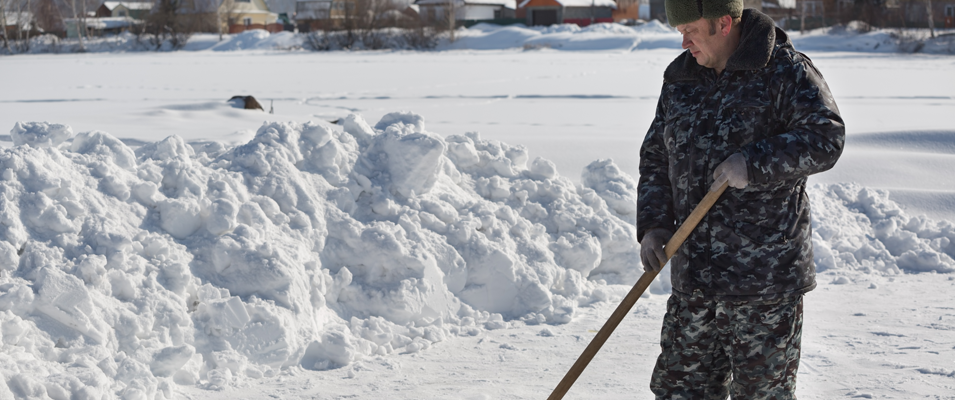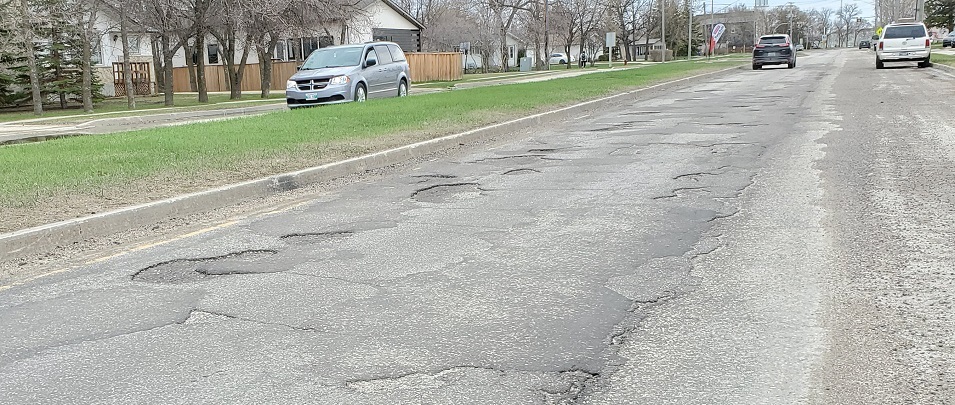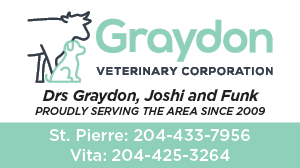
It happens every winter. Whether it takes us by complete surprise or blows in just as the meteorologists predicted, winter storms and heavy snowfalls are far more commonplace in Manitoba than hurricanes off the Florida coast. The only thing that’s less predictable is the frequency of these events from one winter to the next.
Understanding that snowfall is a certainty, councils budget for snow-clearing every year. It’s a service that residents have come to expect. It is, after all, one of the things we pay taxes for.
But there’s a fine line between what is the town or RM’s responsibility and what belongs to the homeowner. To many residents, this fine line comes in the form of a windrow, and it’s a point of contention that surfaces after every major snow clean-up event.
A windrow is a ridge of snow that’s left behind after a snow plough or grader passes by. Oftentimes these windrows stretch across the end of residential driveways, requiring homeowners to dig themselves out. The frustration for residents is that these windrows are often pushed there hours—or sometimes days—after they have already cleared their driveway. At times the ridges are dense and high enough to make shovelling difficult.
Both Niverville and Ritchot’s snow-clearing policies deem windrows on private driveways the responsibility of the property owner, except under very specific circumstances.
“Private driveways will not be cleared of snow deposited by municipal equipment,” states Ritchot’s snow-clearing policy. “Operators are to use their best judgement and ability to limit the size of windrows left on driveways. During the procedure of widening and/or cutting accumulation of snow or ice from the streets, windrows will be removed from all driveways.”
Niverville’s policy, too, provides for private property windrow clearing only in cases of “street widening.” An example of this is when a grader removes packed snow from the asphalt surface of a road and blades it to the curbs, resulting in large chunks of ice and snow blocking driveways.
Likewise, the City of Winnipeg doesn’t clear windrows unless they reach eight inches in height, which according to their policy is the average height of snow left by the city’s ploughs. Their policy also states that windrow clean-up may be delayed until satisfactory resources are available.
“Town council reviews the policy annually and considers other options,” says Eric King, Niverville’s chief administrative officer. “For Niverville as a whole, [windrow clearing] would represent an estimated cost increase of $30,000 to $40,000 per year in time and wear and tear on our equipment.”
According to King, this could average out to about $70 in additional taxes per household per year. This number would vary based on a home’s assessment value. Some would pay more, others would pay less.
Mayor Myron Dyck says there are a lot of variables that would affect that extra cost, though, causing it to go potentially even higher depending on residents’ expectations.
“Is there the expectation that some machine is following the grader?” Dyck asks. “That cost may be more.”
Doing this would require hiring more staff and buying more equipment or contracting the job out to another company. Dyck says that if residents wanted to save on those costs, the town’s existing resources could be used for windrows, but only after all of the streets are cleared, which means residents could be waiting a day or two for the service.
Further to that is the question of liability for driveway damage during windrow clearing with heavy equipment. Who would be responsible for the repair? If it’s the town, then repair costs would come out of everyone’s taxes.
Without question, windrow clearing will come at an additional cost unless residents are willing to shovel their way through. But for those willing to pay the extra cost, Dyck suggests that hiring private companies might be a better solution anyway.
“If people were to hire businesses that provide snow-clearing services, the cost to the resident could very well be the same. However, money in a business owner’s pocket [funnels] back into the community. Employees are hired, equipment is purchased, the money buys groceries, building supplies, and restaurant visits right here in our own community. Thus, the economic spinoff is greater by hiring a business owner than simply paying more taxes.”
While it may be fair to envy residents of Winnipeg who are only forced to shovel windrows of eight inches or less, it should also be noted that clean-up of residential streets there can take exponentially longer than they do in most rural communities.
Winnipeg’s streets are designated by priority level. Residential streets take third priority, following major high-traffic thoroughfares and bus routes. Once city street cleaners finally get to residential areas, Winnipeg’s policy states that clearing operations can take up to five days to complete. Work on weekends and holidays is limited if streets are considered passable.
“In Niverville, the [entire] town is mostly done within two days,” says Dyck. “The first pass on one day and the second pass up to the curb on day two. I wonder how many take this for granted after living here for a few years. I would say that our community is likely done quicker than almost any other in the capital region. People should remember, when they say ‘I pay my taxes,’ the excellent and superior service they get compared to other communities that also pay their taxes and get less efficient service.”



















